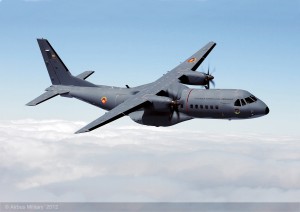2013-02-18 Colombia has battled the FARC for a considerable period of time.
The FARC operate in the jungles of Columbia and operate in the East and Southeast of the country. The armed forces’ participation in counternarcotics operations associated with the FARC is aimed at penetrating one of the areas of both coca cultivation and greatest guerrilla influence: the southern states of Caquetá, Guaviare, and Putumayo, and the Macarena Mountain in Meta. The FARC operate in rugged terrain and in austere settings.
To fight the FARC, the Colombian forces need to go to where the FARC operate.
This means a need to have force packages able to operate in very difficult terrain and to operate off of austere and remote airfields as well.
At the heart of the shaping of an effective Colombian military to deal with the FARC has been an enhanced capability for the forces to operate in an expeditionary manner.
According to a RAND report:
The defeats suffered by Colombian military forces in 1997 and 1998 convinced the government of the need to strengthen and modernize the military. In the view of Colombian analysts, the military high command under General Tapias has become more self-critical and open to change than in the past.
In 1999 and 2000, significant changes included: A new vision of operations, with emphasis on mobility and rapid reaction, improvement of the collection and processing of information, and development of an integrated communications system.
After Mitu, which was overrun by FARC guerrillas in 1998, in particular, the military has learned to integrate air power in support of ground operations.
http://www.rand.org/pubs/monograph_reports/MR1339.html
Key tools in the fight have been provided by the combination of Blackhawk helos, Super Tucano strike aircraft, and Airbus Military transport and support aircraft.
The turboprops work well with the helos and are able to operate off of austere airfields.

The turboprops have several characteristics, which are important for successful operations. They are fuel-efficient. They have good loiter time. They can operate in virtually any conditions. They are rugged. They are easily maintained in austere settings.
The Colombians operate a fleet of 25 Super Tucanos.
According to one source.
Colombia ordered from Brazil 25 EMB-314 Super Tucano, an enhanced version, with faster speed and higher altitude, of the EMB-312 Tucano trainer aircraft.
The total amount of the procurement was 235 million US dollars.
The deliveries of the airplanes started in 2006 and completed in 2008.
A famous moment for the Super Tucano was when the plane was able to directly strike and kill a major FARC leader. It was a Colombian air force Super Tucano that dropped the “smart bomb” that killed Reyes, then second in command of the FARC, as he slept at a camp a mile inside Ecuadorean territory.
The Super Tucano is one key turboprop asset.
Airbus Military provides the other others.
The initial transfer of C-212s from Spain to Columbia has been augmented over the past few years by Columbia building a family of Airbus Military transport and surveillance aircraft. The current fleet includes 6 C-212s, 6 CN-235s, and 4 C-295s, which will grow to 6 in the first quarter of 2013.
Transport is a key element of the capability necessary for Colombia to fight the FARC.
According to the RAND cited earlier:
Mobility is the key to the Colombian military strategy.
Only by being able to bring reinforcements can the Colombian military neutralize the guerrillas’ operational and tactical advantages.
Mobility means air transport, because the guerrillas are able to mine the roads (where they exist) that military convoys must traverse to reach threatened points.
The C-212s have played many roles, including carrying the supplies the support for Blackhawk forward deployed operations.
The C-295s are providing transport, medevac support, and paratrooper operational capabilities as well.
As the Airbus Military working relationship has expanded from the C-212 to a family of aircraft, the relationship has broadened as well.
Currently, Airbus Military has a support contract (FIIS or Full Integrated In-Service Approach) with the Colombian Air Force, which provides the logistical channel to support the maintainers.
Airbus Military also provides training for the maintainers both in country and at the Airbus Military training facility in Seville.
In short, the Columbian forces have relied on their turboprops as a key instrument in supporting the ground forces, in terms of strike, transport and other forms of support.
They have found the turboprops to be rugged, reliable and maintainable in austere settings.
Perhaps the FARC has a different view.
The following video shows some of the air assets of the Columbian Air Force as seen at a 2010 air show in Columbia.
http://www.youtube.com/watch?v=7P-0qiMBJLI
The FIIS or Full Integrated In-Service Approach of Airbus Military was discussed during the Airbus Trade Media event last May and the relevant slides are presented below:

